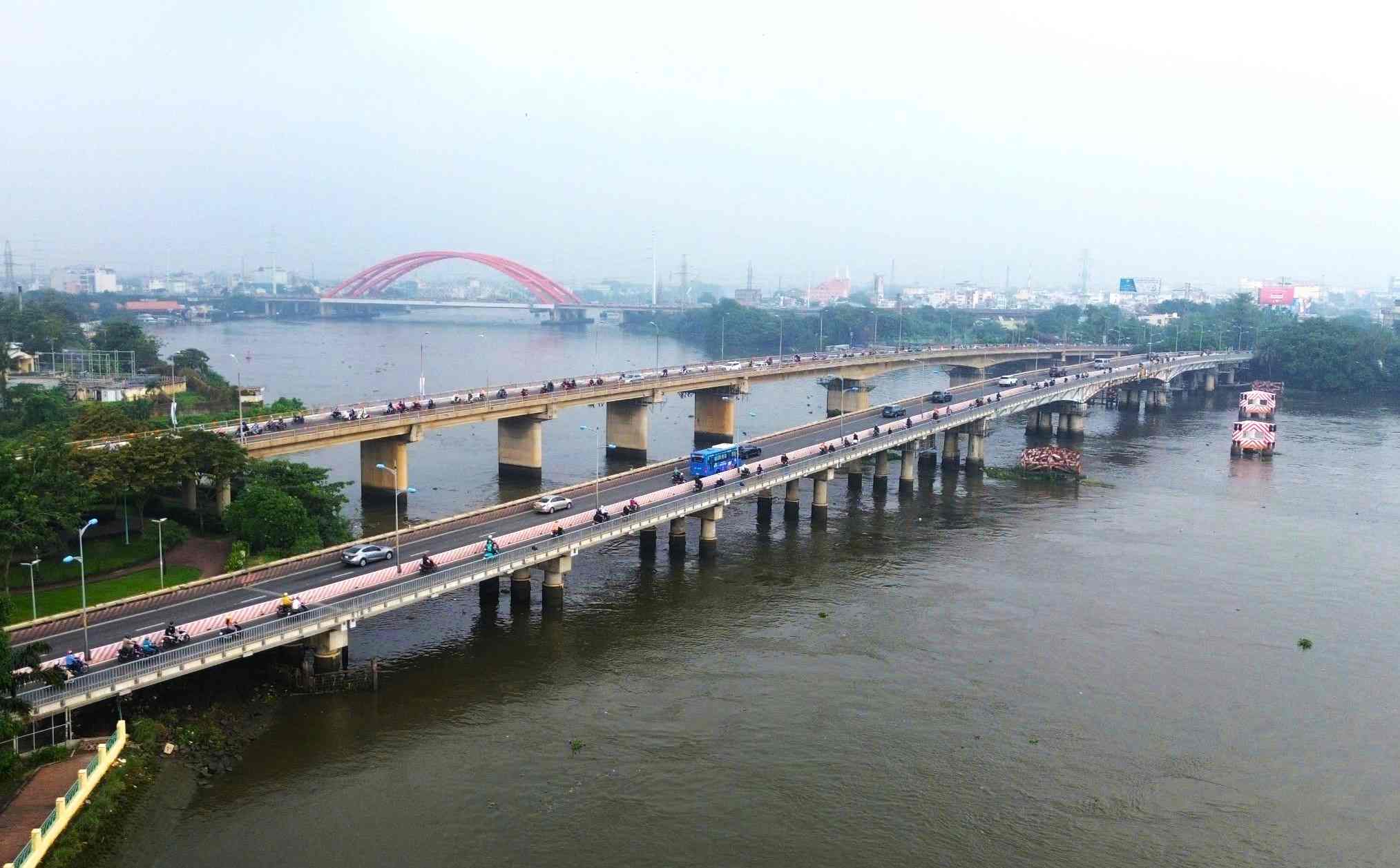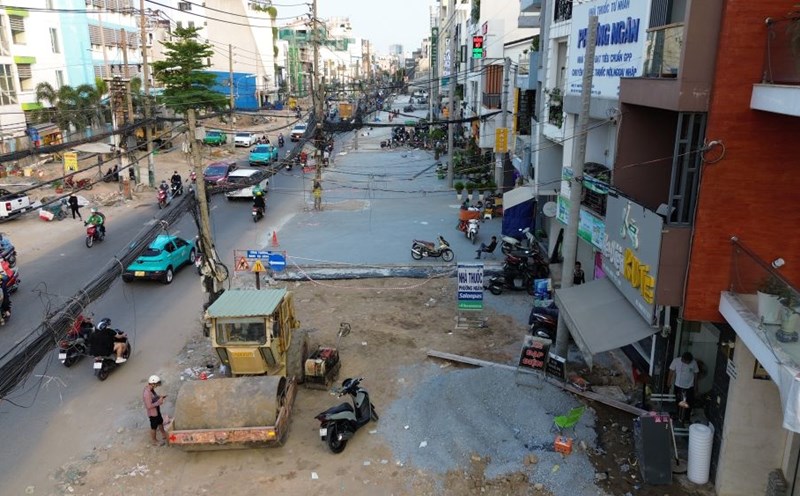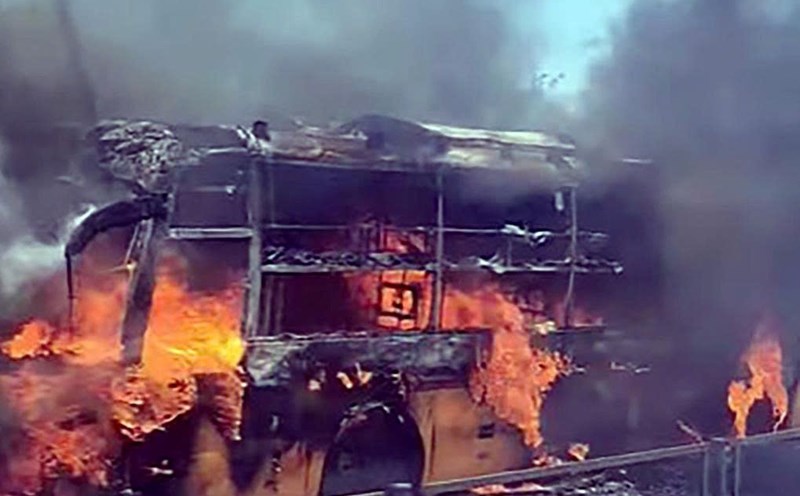On May 26, many people from National Highway 13 and Tam Vu Street moving into the center of Ho Chi Minh City via Binh Trieu 2 Bridge were surprised to see Tam Vu underpass being blocked.
Previously, after crossing the bridge, vehicles could turn right onto the underpass under the bridge to continue along Tam Vu Street, then exit to Ung Van Khiem, Nguyen Gia Tri to the city center.
However, due to the closed underpass, all vehicles were forced to flock to Dinh Bo Linh Street - a road that was often congested, especially during rush hour.
The opposite afternoon also encountered a similar situation. Vehicles from Tam Vu Street or National Highway 13 wanting to cross the underpass to Dinh Bo Linh Street cannot travel and must find another direction.

According to the announcement, Tam Vu underpass will be closed to traffic from May 24 to June 15 to serve the project to raise the clearance of Binh Trieu 1 bridge.
Alternative route for motorbikes: Tam Vu road - Binh Trieu 1 bridge - Binh Trieu roundabout - Binh Trieu 2 bridge - Dinh Bo Linh street.
Alternative route for cars: Tam Vu Street - road on the side of Kinh Thanh Da bridge - Xo Viet Nghe Tinh Street - Nguyen Xi Street - National Highway 13 - Dinh Bo Linh Street.
Put into operation since 2018, Tam Vu underpass has a total length of more than 400 m, of which the tunnel under the two bridges is about 170 m long, 7.3 m wide, and 2 m high.
Although not too big, this route plays an important role in relieving traffic pressure at Binh Trieu bottleneck, especially around the old Mien Dong bus station and main roads such as Dinh Bo Linh, National Highway 13, ...

The project to raise the clearance of Binh Trieu 1 Bridge has a total investment of 133 billion VND, starting from the end of 2024. According to the design, the bridge clearance will be increased by more than 1 m for a total length of about 770 m, to meet the requirements of waterway traffic and ensure traffic safety.

The construction plan is implemented according to the technological structure of the rhythmic structure by hydraulic stimulation system, helping to ensure synchronization and safety during the implementation process. After lifting, the scale and demand load remain the same as the current situation.











